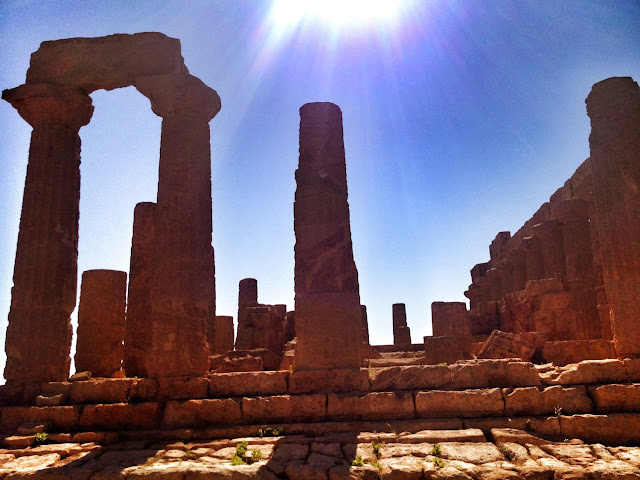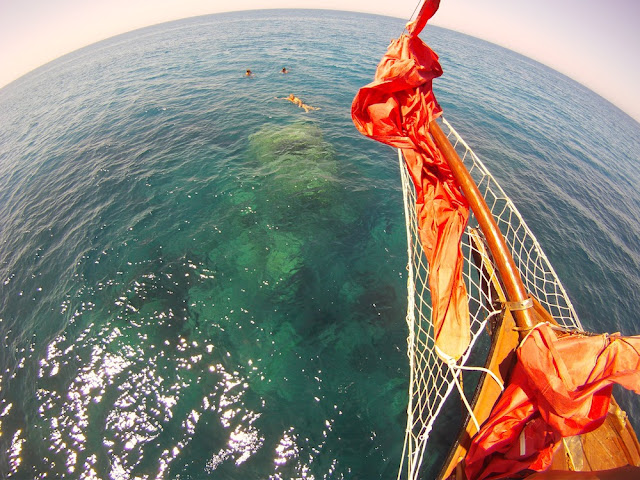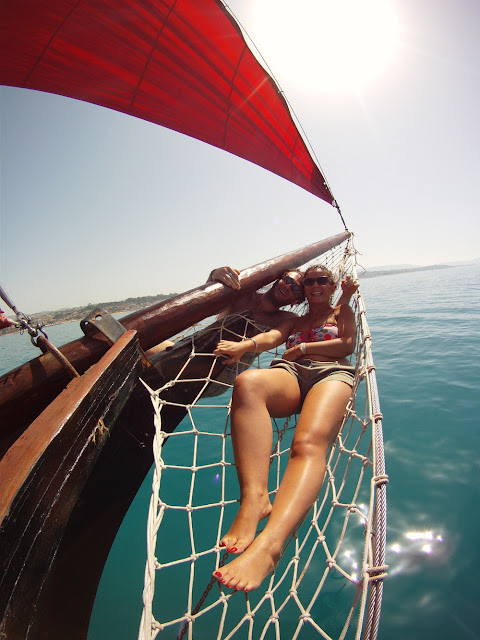What happened to living life to the fullest? Where is the daring adventure that we dreamed about as a kid? Many of us have lost the passion for adventure that filled our childhood, and as real men we should struggle to regain it. For in true adventure we find much more than the cheap thrill of adrenaline, we find ourselves. Adventure is the element of a full life that is perhaps most neglected in modern society, and it is one of the most crucial. To have grand adventures and be able to tell tales of them is central to manliness. The problem is that in our age of technological revolution we have written off adventure and exploration as things of the past, no longer necessary thanks to our newfound, ever evolving capabilities. Although true exploration, in the sense of discovering new things, is now mostly the realm of astronauts and deep sea divers, adventure is available to anyone. What we need to realize is that it is not the discovery of new things that is important for the average man, but the understanding of ourselves which we often acquire through high adventure. Perhaps it is best to look to an old pro in the art of adventure for some insight into the true reasoning behind it.
Sir Wilfred Thesiger (1910-2003), an English explorer best known for his adventures throughout Africa and the Middle East and for adopting the lifestyles of the nomadic people he often stayed with, became famous as the first man to cross the Rub’ al Khali, aka “The Empty Quarter.” The Empty Quarter is one of the largest sand deserts in the world, compromising a large portion of the southern half of the Arabian Peninsula. It is composed of 250,000 square miles of the most deadly terrain on terra firma, with sand dunes that climb well over 1000 feet and summer temperatures over 130 degrees Fahrenheit. Thesiger set out to cross this great expanse and planned to create a map of the region during his journey. He succeeded, crossing the vast unknown of the Empty Quarter not once, but twice, between 1946 and 1949. Recalling the first time he drank water without need to ration it upon his return, he wrote the following;
“For years the Empty Quarter had represented to me the final, unattainable challenge which the desert offered…To others my journey would have little importance. It would produce nothing except a rather inaccurate map which no one was ever likely to use. It was a personal experience, and the reward had been a drink of clean, nearly tasteless water. I was content with that.”
For Thesiger, and for many other adventurers before and long after, it was the adventure itself that was the prize, and the experience gained from it was worth more than any commemoration. He would later write;
“For me, exploration was a personal venture. I did not go to the Arabian Desert to collect plants nor to make a map; such things were incidental. At heart I knew that to write or even to talk of my travels was to tarnish the achievement. I went there to find peace in the hardship of desert travel and the company of desert peoples…It is not the goal but the way there that matters, and the harder the way the more worthwhile the journey.”
Thesiger knew all too well that adventure offered greater rewards for a man than most other things in life. Not rewards in a material sense, but in the immense satisfaction of setting your sights on an achievement and accomplishing it.
Obviously, adventure isn’t what it used to be. Everest has been knocked off more times than you can count, they are paving a highway across the Sahara, and you can check out the secrets of the Amazon by satellite right from your laptop. But does all this mean that adventuring is a lost art? Hardly. As we have seen from testimony of a great adventurer like Thesiger, the thirst for adventure does not come from a need to map out new lands or discover new species, those are secondary objectives. The thirst for adventure comes from within ourselves. It is our inner desire to expand our knowledge through firsthand experience, to test the limits of our own strength and endurance, and in doing so, discover our true self.
The choice to live an adventurous lifestyle is not an easy one. It is very difficult to break free of the monotonous routine of daily life when you have been repeating it for years on end. You can easily come up with a handful of excuses why you shouldn’t book that weekend whitewater rafting trip, travel to a foreign country, or make an appointment for your first SCUBA lesson. I can’t get off of work, I shouldn’t spend the money, who will watch the kids, etc. There is only one way to break the routine, and that is to just do it. Keep in mind the words of George Mallory, known for attempting the first ascent of Everest;
“What we get from this adventure is just sheer joy. And joy is, after all, the end of life. We do not live to eat and make money. We eat and make money to be able to live. That is what life means and what life is for.”
Perhaps it is time for men to seek to regain the element of adventure that originally drove those before us to cross oceans and vast expanses of unknown terrain with no hope of return. We need to bring risk back into our lives. If we are to truly embrace the adventurous life, we must find within ourselves the daring resolve to snatch up our mere existence and drive it to the edge of possibility, knowing full well that the future holds no guarantee for safety, prosperity or happiness and that a full life is not given, it is taken.
Enjoy!
Sir Wilfred Thesiger (1910-2003), an English explorer best known for his adventures throughout Africa and the Middle East and for adopting the lifestyles of the nomadic people he often stayed with, became famous as the first man to cross the Rub’ al Khali, aka “The Empty Quarter.” The Empty Quarter is one of the largest sand deserts in the world, compromising a large portion of the southern half of the Arabian Peninsula. It is composed of 250,000 square miles of the most deadly terrain on terra firma, with sand dunes that climb well over 1000 feet and summer temperatures over 130 degrees Fahrenheit. Thesiger set out to cross this great expanse and planned to create a map of the region during his journey. He succeeded, crossing the vast unknown of the Empty Quarter not once, but twice, between 1946 and 1949. Recalling the first time he drank water without need to ration it upon his return, he wrote the following;
“For years the Empty Quarter had represented to me the final, unattainable challenge which the desert offered…To others my journey would have little importance. It would produce nothing except a rather inaccurate map which no one was ever likely to use. It was a personal experience, and the reward had been a drink of clean, nearly tasteless water. I was content with that.”
For Thesiger, and for many other adventurers before and long after, it was the adventure itself that was the prize, and the experience gained from it was worth more than any commemoration. He would later write;
“For me, exploration was a personal venture. I did not go to the Arabian Desert to collect plants nor to make a map; such things were incidental. At heart I knew that to write or even to talk of my travels was to tarnish the achievement. I went there to find peace in the hardship of desert travel and the company of desert peoples…It is not the goal but the way there that matters, and the harder the way the more worthwhile the journey.”
Thesiger knew all too well that adventure offered greater rewards for a man than most other things in life. Not rewards in a material sense, but in the immense satisfaction of setting your sights on an achievement and accomplishing it.
Obviously, adventure isn’t what it used to be. Everest has been knocked off more times than you can count, they are paving a highway across the Sahara, and you can check out the secrets of the Amazon by satellite right from your laptop. But does all this mean that adventuring is a lost art? Hardly. As we have seen from testimony of a great adventurer like Thesiger, the thirst for adventure does not come from a need to map out new lands or discover new species, those are secondary objectives. The thirst for adventure comes from within ourselves. It is our inner desire to expand our knowledge through firsthand experience, to test the limits of our own strength and endurance, and in doing so, discover our true self.
The choice to live an adventurous lifestyle is not an easy one. It is very difficult to break free of the monotonous routine of daily life when you have been repeating it for years on end. You can easily come up with a handful of excuses why you shouldn’t book that weekend whitewater rafting trip, travel to a foreign country, or make an appointment for your first SCUBA lesson. I can’t get off of work, I shouldn’t spend the money, who will watch the kids, etc. There is only one way to break the routine, and that is to just do it. Keep in mind the words of George Mallory, known for attempting the first ascent of Everest;
“What we get from this adventure is just sheer joy. And joy is, after all, the end of life. We do not live to eat and make money. We eat and make money to be able to live. That is what life means and what life is for.”
Perhaps it is time for men to seek to regain the element of adventure that originally drove those before us to cross oceans and vast expanses of unknown terrain with no hope of return. We need to bring risk back into our lives. If we are to truly embrace the adventurous life, we must find within ourselves the daring resolve to snatch up our mere existence and drive it to the edge of possibility, knowing full well that the future holds no guarantee for safety, prosperity or happiness and that a full life is not given, it is taken.
Enjoy!






















































